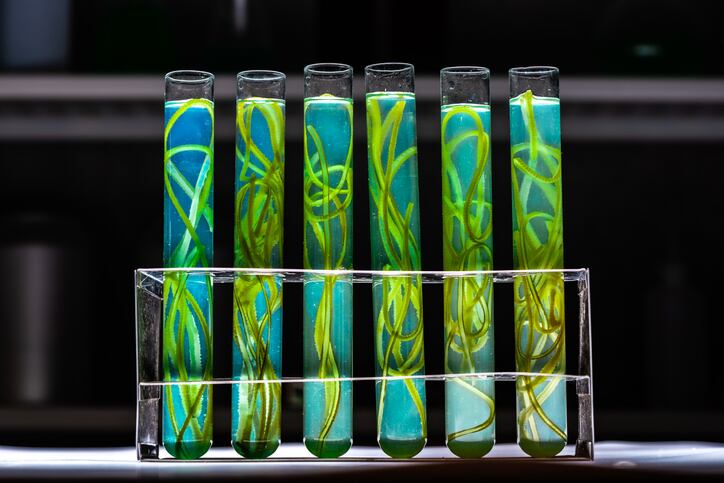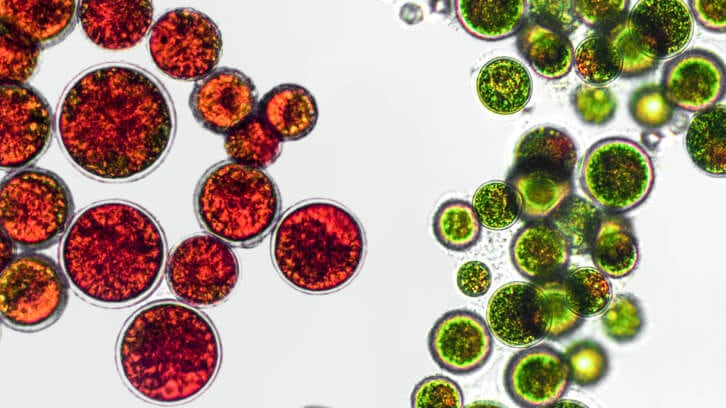Over five decades ago astronaut Neil Armstrong famously stepped on the moon and said, "That's one small step for man, one giant leap for mankind." Today, mankind continues to make leaps and bounds in space as researchers work to identify sustainable solutions to help support astronauts on prolonged missions using algae-based systems.
American Public University System (APUS) recently announced that the Spirulina Algae Group, part of the University's Supernova Search Group, has received a NASA research grant to study the use of spirulina for growing plants in space environments. The research will use Hawaiian Spirulina Pacifica (Arthrospira platensis), to help support plant health, nutritional value, and production rates for many plants in similar conditions to Mars and the Moon.
The Spirulina Group said it chose spirulina algae for its functional properties that include temperature and radiation resistance as well as an ability to reclaim wastewater. The microalgae has also been shown to support plant health in highly alkaline soils, similar to conditions on the Moon and Mars.
"Spirulina has sustained life forms over billions of years here on Earth, and is heralded as a nutrient-rich human superfood today," said Collette Kakuk, Chief Strategic & Commercial Officer of Cyanotech, which supplies the Hawaiian Spirulina Pacifica for the project through a partnership with the Group. "Its selection for this important NASA sponsored research into how Hawaiian Spirulina can nourish and fortify the health of other plants in extraterrestrial environments underscores its enduring significance and value."
Background
Principle Investigator Dr. Kristen Miller, an APUS professor who co-created the Supernova Search Group, worked with American Military University (AMU) graduate student Terry Trevino to launch a pilot study examining how spirulina could be used as a biofertilizer to support the healthy growth of vascular plants in simulated martian regolith. This initial study, conducted in partnership with APUS' Analog Research Group (AARG) at the Inflatable Lunar/Mars Analog Habitat (ILMAH), operated by the University of North Dakota (UND) Human Spaceflight Laboratory, led to APUS receiving the NASA EPSCoR Rapid Response Research (R3) grant through the West Virginia Space Grant Consortium.
Process
Miller told NutraIngredients-USA that the research will be performed in two different locations: a controlled lab environment in San Francisco and an enclosed analog habitat in North Dakota.
“This is important because laboratory conditions cannot always exactly mimic those in space environments. Between the two locations, we will use over 1500 plants to methodically investigate the extent to which lunar and Martian regolith, CO2 concentration, and non-terrestrial gravity affect the growth of vascular plants. We are especially interested in evaluating how Hawaiian Spirulina can be used to support healthy plant growth in these non-ideal conditions,” she said.
Trevino, who is part of the Spirulina Group, added that the testing will include microscopic observations of the taproot, the root cap, as well as the rate at which the taproot extends.
“I’m very curious to see and measure the lateral extensions of those single cell root hairs that emerge from the root cap. I believe these root hairs will play a significant role in this stressed environment of soil with no organic nutrition to speak of. We also hope to test the metal content of the plants and see if we can chart an uptake,” said Trevino. “In the future, this research could translate to and work as an inoculant of poor or contaminated soils. (However, this additional work is not a part of the current research grant from NASA.)”
Opportunity
Miller said they have been testing their ideas in small-scale pilot studies for sometime now and this new grant means that they will have the resources to be able to do a large-scale, comprehensive project with solid controls and enough samples for statistical analysis.
“It will allow us to thoroughly test all of the variables that we have been wanting to test: soil/regolith conditions, environmental conditions, and even the effects of microgravity,” Miller said.
“It’s exciting to see a thought experiment with rudimentary methods come to fruition after running through a simple set of tests showing immediate results,” added Trevino.
Larry Harrison, Associate Professor of Astronomy, Hawaii Community College, also highlighted how the research allows students from the high school level through post-graduate studies to become involved with NASA-level research, giving them the chance to gain insight into the research processes and providing valuable research experience that will support their future education and career goals.
The research will be performed in late 2023 through 2024, with the team slated to analyze and publish their findings in 2025.




